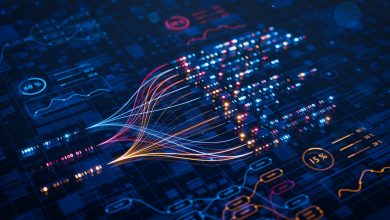Artificial intelligence (AI) has become a resource for businesses seeking competitive advantages in data analysis, automation, and cybersecurity. However, as AI adoption accelerates, so do the risks associated with data breaches, system vulnerabilities, and unauthorized access.
The National Security Agency (NSA) has comprehensive guidelines for AI implementation that balance innovation with protection. Understanding the connection between the NSA and AI technology offers valuable insights into how organizations can implement AI systems while maintaining rigorous security standards. The NSA’s frameworks provide actionable strategies that businesses across all sectors can adopt to strengthen their AI infrastructure while minimizing security risks.
The NSA’s Role in AI Development and Security
The NSA operates at the intersection of national security and cutting-edge technology. The agency uses AI for threat detection, pattern recognition in massive datasets, and real-time response to cybersecurity incidents. Their AI systems analyze communications, identify potential threats, and support intelligence operations worldwide.
Beyond internal applications, the NSA has established security protocols that define how AI systems should handle sensitive information. These standards address data encryption, access controls, and system monitoring. The agency’s Cybersecurity Directorate releases public guidance to help private sector organizations implement similar protections.
The NSA’s experience with AI security stems from handling some of the world’s most sensitive data. This positions the agency as a credible source for best practices that businesses can adapt to their own AI initiatives.
Core NSA Guidelines for AI Security
The NSA has published several key recommendations for organizations deploying AI systems. These guidelines address common vulnerabilities and establish baseline security measures.
Data Protection and Encryption
AI systems require vast amounts of data for training and operation. The NSA emphasizes that organizations must classify data based on sensitivity levels and apply appropriate encryption methods. This includes data at rest, in transit, and during processing.
Businesses should implement end-to-end encryption for AI training datasets, particularly when they contain customer information, proprietary business intelligence, or regulated data. The NSA recommends using Federal Information Processing Standards (FIPS) validated cryptographic modules for encryption operations.
Physical security matters, too. There will always be physical data within organizations, so individuals must use NSA-approved shredders for legal documents and sensitive records that could compromise AI systems or reveal training data patterns.
Access Control and Authentication
The NSA stresses that AI systems require strict access controls. Not every employee needs access to AI models, training data, or system configurations. Organizations should implement role-based access control (RBAC) and regularly audit who has access to critical AI infrastructure.
Multi-factor authentication adds another security layer. The NSA recommends that organizations require multiple authentication factors for anyone accessing AI development environments, production systems, or sensitive datasets. It reduces the risk of credential theft and a compromised system.
Supply Chain Security
AI systems often incorporate third-party components, including pre-trained models, cloud services, and open-source libraries. The NSA warns that these dependencies create potential attack vectors. Adversaries can compromise AI systems by injecting malicious code into libraries or corrupting pre-trained models.
Organizations should vet all third-party AI components before integration. This includes
- Reviewing the security practices of AI vendors and cloud providers.
- Scanning open-source libraries for known vulnerabilities.
- Testing pretrained models for backdoors or data poisoning.
- Maintaining an inventory of all AI system components for rapid response during security incidents.
Implementing AI-Powered Online Security
AI-powered online security is one of the most promising applications of the technology. Organizations can use AI to detect anomalies, identify potential breaches, and respond to threats faster than human analysts alone.
The NSA encourages businesses to deploy AI security tools that align with their established guidelines. Machine learning models can analyze network traffic patterns, flag unusual user behaviors, and identify malware signatures. These systems learn from historical data to improve detection accuracy over time.
However, AI security tools also require protection. Attackers increasingly target the AI systems themselves, attempting to manipulate them through adversarial inputs or model poisoning. Organizations must harden their AI security infrastructure using the same principles the NSA applies to its own systems.
Monitoring and Incident Response
Continuous monitoring forms a critical component of the NSA’s AI security framework. Organizations should implement logging systems that track all interactions with AI models, including queries, outputs, and system modifications. The logs enable rapid detection of unauthorized access or suspicious activity.
The NSA recommends establishing clear incident response procedures for AI systems. When a security event occurs, teams need predefined workflows for containment, investigation, and recovery. This includes procedures for taking AI systems offline, preserving evidence, and notifying affected parties.
Regular security assessments help identify vulnerabilities before attackers exploit them. Organizations should conduct penetration testing on AI systems, simulate attack scenarios, and update security measures based on findings.
Training and Awareness
Human factors often represent the weakest link in AI security. The NSA emphasizes that organizations must invest in training programs that educate employees about AI security risks and best practices.
Developers working on AI systems need specialized training in secure coding practices, data handling procedures, and threat modeling. Business leaders should understand the strategic risks associated with AI deployment and how security investments protect organizational assets.
Regular security awareness campaigns help maintain vigilance across the organization. Employees should recognize social engineering attempts, understand data classification requirements, and know how to report suspicious activity.
Adapting NSA Guidelines for Your Organization
While the NSA operates in a unique security environment, businesses can adapt these guidelines to their specific contexts. Assess your current AI security posture against NSA recommendations. Identify gaps in encryption, access controls, supply chain security, or monitoring capabilities.
Prioritize improvements based on the sensitivity of your data and the potential impact of a security breach. Organizations handling financial data, healthcare information, or intellectual property should implement more stringent controls than those working with public datasets.
Consider engaging cybersecurity consultants who specialize in AI security. They can help translate NSA guidelines into practical implementation plans tailored to your infrastructure, budget, and risk tolerance.
Securing AI for the Future
The connection between the NSA and AI technology offers valuable lessons for organizations navigating the complex landscape of AI security. By adopting the agency’s guidelines, businesses can harness AI’s transformative potential while protecting sensitive data and maintaining stakeholder trust.
AI security requires ongoing commitment. As threat actors develop more sophisticated attack methods, organizations must continuously update their defenses. Following NSA guidelines provides a solid foundation, but security teams should stay informed about emerging threats and evolving best practices.




